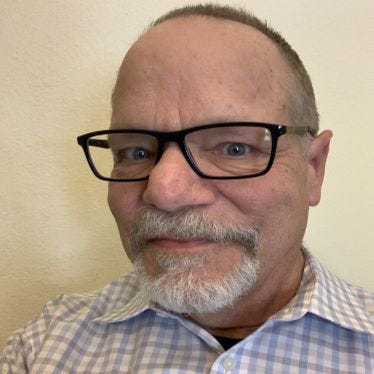‘Misleading’ report cites lead levels in protein powders
A report from the Clean Label Project cited a ‘staggering’ number of protein products tested exceed Prop. 65 limits for lead. Industry experts said the report will mislead consumers into thinking products are unsafe.

At a Glance
- A new report tested 160 different protein powder products.
- Many of the products exceeded Prop. 65 limits for contaminants.
- Experts say those products are safe, and say that the report’s authors didn’t make that clear.
The Clean Label Project has published a report that alleges to have found lead contamination in protein powder supplements that exceed Prop. 65 limits. The report, which attracted mainstream media attention, has been lambasted by industry groups as misleading.
The Clean Label Project is a Colorado-based nonprofit organization that states its mission is “to bring truth and transparency to food and consumer product labeling.” The organization does not disclose its funding sources, though in the past executive director Jaclyn Bowen has claimed that it is funded primarily by donations from consumers.
The organization recently released a report it did on tests performed on 160 products from 70 of the top-selling protein powder supplement brands. The products were sent to Denver laboratory Ellipse Analytics, which is a partner in the project. The lab tested the products for levels of arsenic, cadmium, lead, mercury, bisphenols (plasticizing agents) and pesticides.
Prop 65 limits exceeded
Among the top-line results reported by CLP were that “47% of products exceeded federal or state regulatory set for safety,” and that 41% of organic protein powders were found to have more than twice the allowable level of lead as specified by California’s Prop. 65.
The report garnered significant mainstream media attention, with an article posted on the CNN website saying that the products had been found to contain “disturbing levels of lead and cadmium.”
However, the excess levels were in reference to the limits set by Prop. 65. Food and supplement industry sources have long observed that those limits were set far below federal limits, which were arrived at via a consensus of what levels are practical for manufacturers to achieve and what levels pose a true health threat.
CRN: Misleading conclusions
Andrea Wong, Ph.D., senior vice president of scientific and regulatory affairs for the Council for Responsible Nutrition (CRN), said the report will mislead consumers into thinking the products that were tested are unsafe.
“Reports like those issued by the Clean Label Project often lack critical context and risk misleading consumers rather than empowering them,” Wong said in a statement issued by CRN.
“First, it is important to emphasize that the detection of contaminants, as highlighted in this report, does not inherently equate to a health risk. Modern analytical techniques can detect even trace levels of naturally occurring elements, such as heavy metals, which are present in soil, air, and water. These trace levels are often well below established safety thresholds set by federal agencies like the Food and Drug Administration (FDA) and the Environmental Protection Agency (EPA),” Wong added.
Wong also noted that as analytical chemistry techniques improve, it is possible to detect ever tinier amounts of contaminants. She emphasized, however, that detecting those faint signals does not equate to a health risk.
Wong said CRN had concerns about the transparency of the report.
“CLP has not provided sufficient transparency regarding how products were selected, the criteria for contamination thresholds or the interpretive framework for their findings,” she said.
Similar concerns have been raised about other reports CLP has issued in the past. The organization does not submit its reports to peer review, though it has been urged to do so. When the organization released its first protein report in 2018, which reported similar bombastic findings, Bowen said at that time that the findings posed such an urgent public health risk that there was no time to waste in making the results available.
CLP did not respond to an inquiry from SupplySide Supplement Journal about why in the intervening six years it has not considered submitting its reports to peer review.
NPA: CLP keeps dodging questions
Daniel Fabricant, Ph.D., president and CEO of the Natural Products Association, said his organization had also requested more transparency from CLP about its methodology and the data behind the study but had been rebuffed. Fabricant said it’s not the first time NPA came up empty when trying to interact with CLP.
“In 2020, they pulled the exact same stunt attacking collagen supplements, but this so-called study is nothing but hot air. When we asked them to disclose its funders and the full methodology of the collagen study, they did not respond and instead hid from the truth,” Fabricant said.
Prop. 65 sets protein powders up to fail
Consultant Tara Couch, principal in the Woodland Park, Colo.-based firm TLC Regulatory and Laboratory Consulting, said supplements with a big dosage, like protein powders, are quite likely to exceed the Prop. 65 limits when any amount of a contaminant, like lead, is detected, whether that implies a health risk or not.
“The maximum allowable dose limit (MADL) of 0.5 µg per day assigned to lead in Prop. 65 is one of the lowest limits for the contaminant in the world,” she said.
Meeting the Prop. 65 limits is possible but requires a major commitment on the part of the brand, she said.
“The establishment of an appropriate, scientifically sound, and compliant finished product specification is a challenging and complicated process that requires extensive technical knowledge of all of the product formulation raw materials (dietary ingredients and components), the manufacturing and packaging process, laboratory analytical test methodologies, stability of the product, intended product usage, and all claims that will be made on the product label and labeling – not just the Supplement Facts Panel (SFP). This level of necessary knowledge and expertise is not always readily available, or sought out within the industry,” Couch said.
About the Author
You May Also Like





